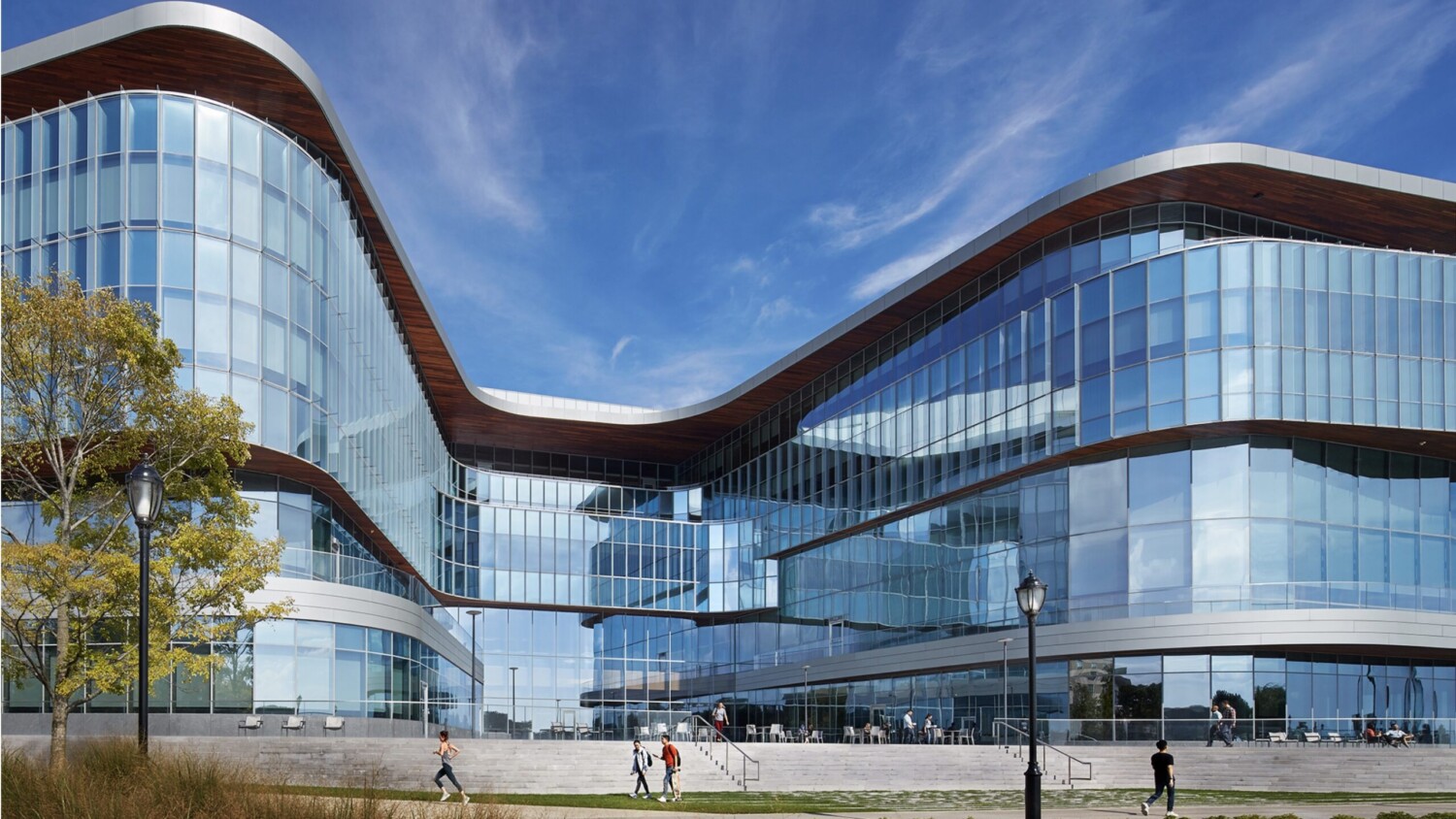Hall, Merrick, and McCaugherty on the Craft and Business of Architectural Photography
Nick Merrick and Steve Hall have been photographing architecture longer than most readers of this blog have been alive (myself included). When you think of some of the most important architectural projects of the last 100 years, Merrick and Hall have probably been there, creating photographs to share the stories of these projects with the world. After decades at the storied architectural photography firm Hedrich Blessing, Merrick and Hall transitioned into directing their own firm, and continue on as some of the most sought-after architectural photographers in the world. We recently had the chance to sit down with the two, as well as their latest partner and newest addition to the team, the prodigally talented Kendall McCaugherty, to better understand their philosophy and approach to creating some of the world’s most famous architectural photographs. We also wanted to pry a little bit deeper t learn from their mistakes, understand their origin stories, and of course, take a look at their images.
Great, kid! Don’t get cocky
After graduating college from the University of Michigan, with the urging of his professor Baltazar Korab, a young Nick Merrick moved to Chicago and was told to look up Hedrich Blessing – who at the time was known for their photographs of architecture created with the use of 8×10 cameras, which Merrick himself loved using. Merrick’s first order of business after moving to Chicago was to figure out how to make ends meet, and in order to do so, worked at an Italian restaurant – spending his spare time hauling out his 8×10 camera on to the streets in order to photograph the city.
It was during those exploratory periods around the city of Chicago that Merrick would create the portfolio he would finally have the chance to show to Jack Hedrich, one of the founders of the Hedrich Blessing firm.
After a brief skim through Merrick’s carefully curated portfolio, Hedrich was less than impressed. “You’ll make a good apprentice, though. Go fill out the apprenticeship paperwork and we’ll give you a call back”. That call didn’t come for nine months, and when it did, Merrick was offered a position assisting Hedrich Blessing photographers while they photographed furniture. His salary was $108 a week, hardly much, but enough to teach him everything he needed to know about photographing furniture under the auspices of one of the most successful architecture photography firms in the world.
During his apprenticeship, Merrick spent any downtime he had in the studio poring over the H.B. archives, holding 8×10 negatives up to the light and inspecting them one at a time. They contained photographs of some of America’s greatest architecture by America’s greatest architectural photographers spanning decades from the founding of Hedrich Blessing in 1929.
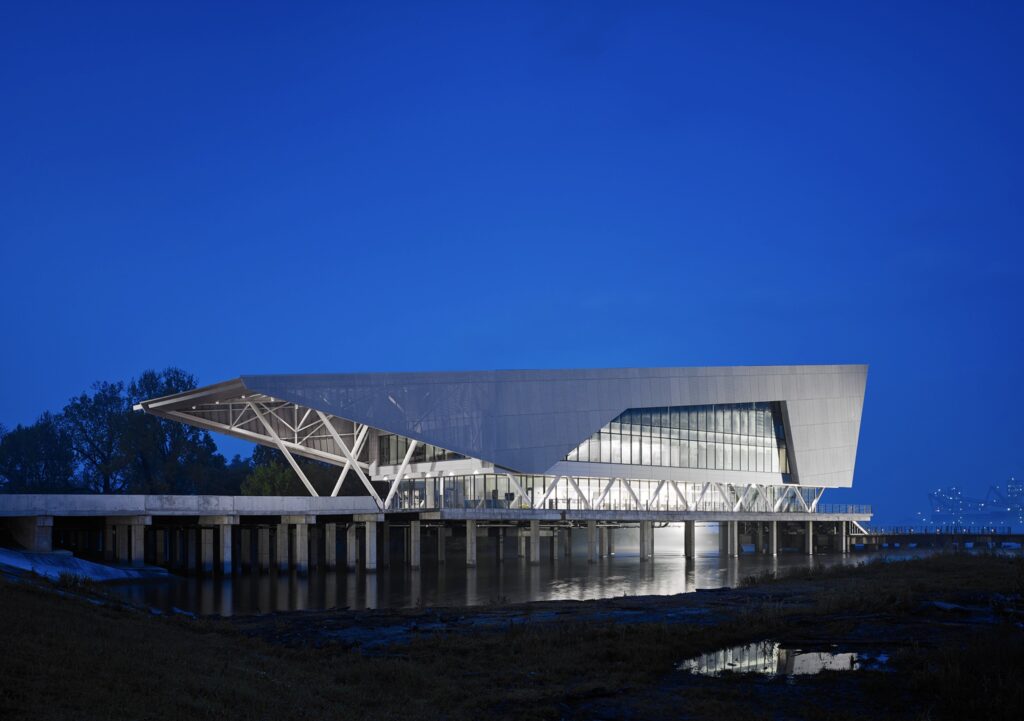
No one would assume that studying geology would lead to a career in architectural photography, but that’s how Steve Hall got his start. A hobbyist photographer at first, Hall joined Hedrich Blessing in 1984 as Merrick’s assistant – where his role would gradually expand until he was given the chance to undertake his own assignments, going “on-camera” and beginning to photograph projects across the country under his own direction.
Under the direction of Merrick and Hall, the Hedrich Blessing firm wanted to revolutionize architectural photography into a form of fine art, rather than treat it solely as a commercial photography studio, allowing photographers to put their own style on images and growing each photographer’s influence by crediting them directly in publications, a practice that continues today. Hedrich Blessing sought to consider the photographer’s interpretation of the architecture as its own art form, rather than a Xerox of a building – to elevate the practice of architecture in the eyes of the general public.
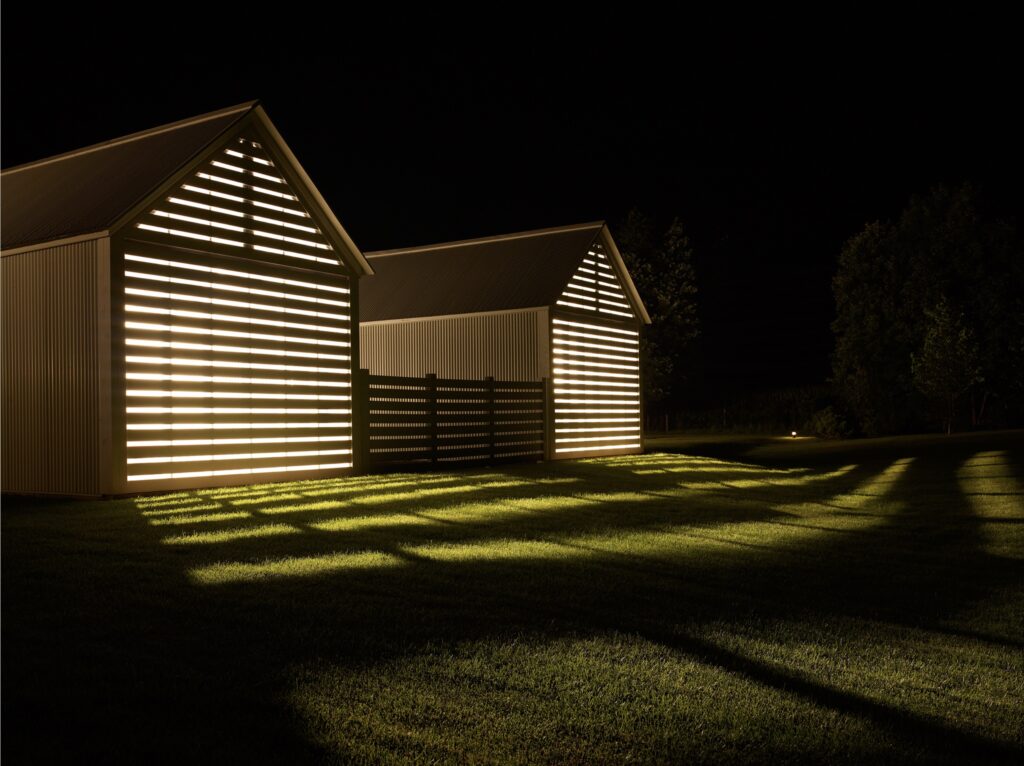
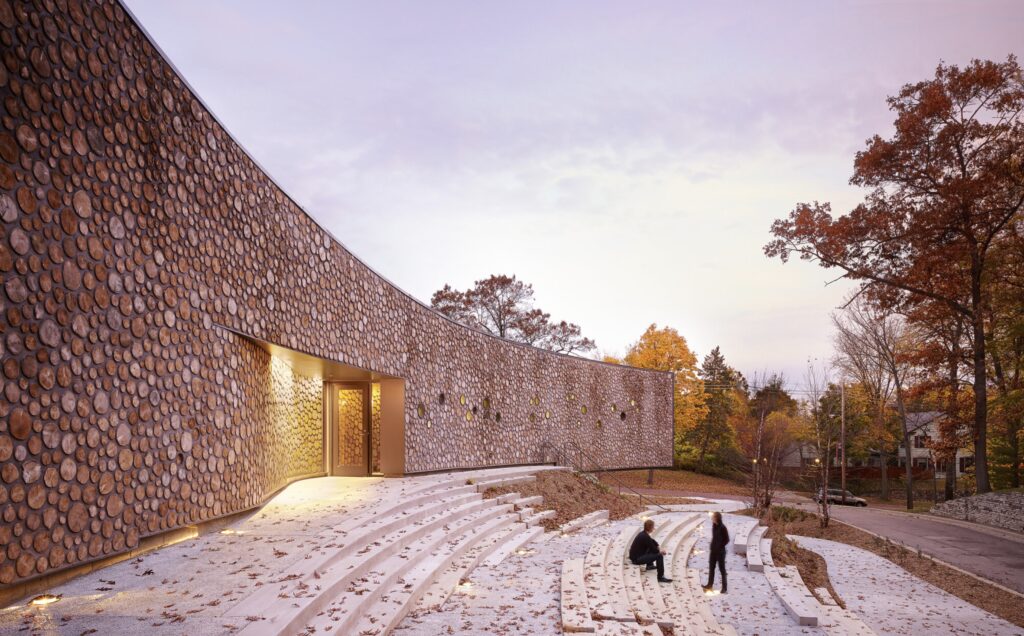
Because of this new approach under the leadership of Merrick, Hedrich Blessing grew to be one of the most respected and recognizable names in the architecture world, with their work being archived at the Chicago Historical Society, the United States Library of Congress, the University of Chicago, and many more; such is the gravitas associated with images created by the firm.
Hedrich-Blessing operated until the retirement of Jim Hedrich, son of founding partner Ken Hedrich, in 2003. The studio was wound down in 2017 owing to the changing landscape of architectural photography (predominantly digital workflow no longer requiring the overhead to develop and store film) and the rapidly changing financial landscape left in the wake of the 2008 recession.
Today, the firm trades under the name Hall + Merrick + McCaugherty, with Kendall McCaugherty recently promoted to partner in the reformed company.
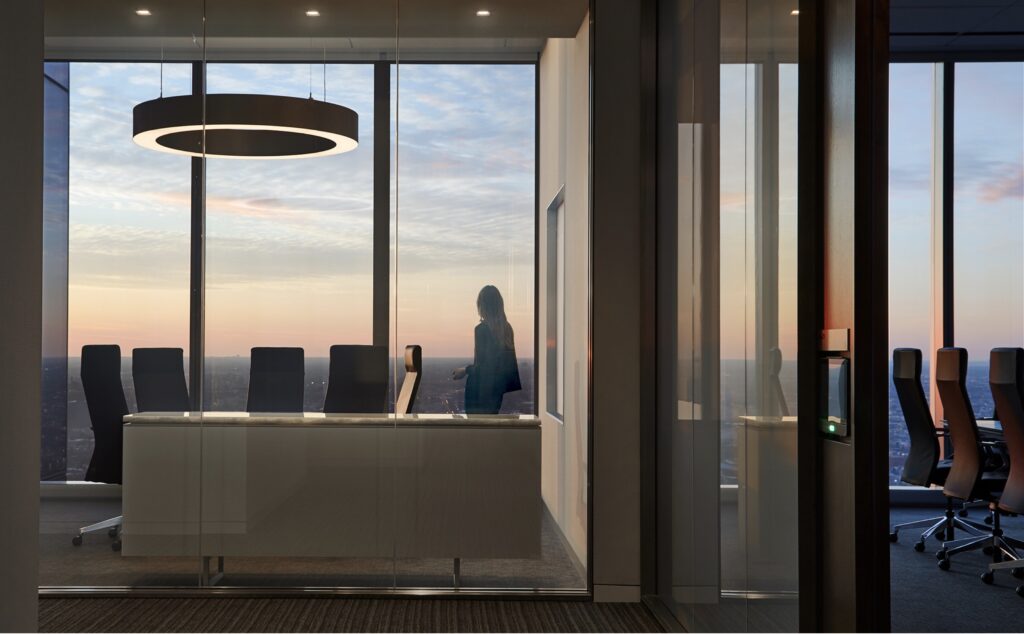
I’ve never seen a good photograph made from behind a desk
Nick, Steve, and Kendall all share a relatively similar approach to image making. A slow, deliberate process ensures they are creating images that are perfectly composed, well-styled, and will serve the needs of their client for years to come. “It is our job as the photographer to figure out which images to make” and communicating that to the client effectively is very important in building a long term working relationship. There is a certain element of trust inherent in the relationship, one that Hall and Merrick often take years to develop. Despite this, there’s a few pet peeves that still come up from time to time that architectural photographers of all types can identify with.
When asked if there’s anything he can’t stand, Merrick immediately mentioned floor plans with lines drawn on them, signifying angles and images that a client thinks will work. “Put the camera here, and match up the frame with these red lines drawn on the floor plan!” Merrick deadpan quips in response: “I’ve never seen a good photograph made from behind a desk.”
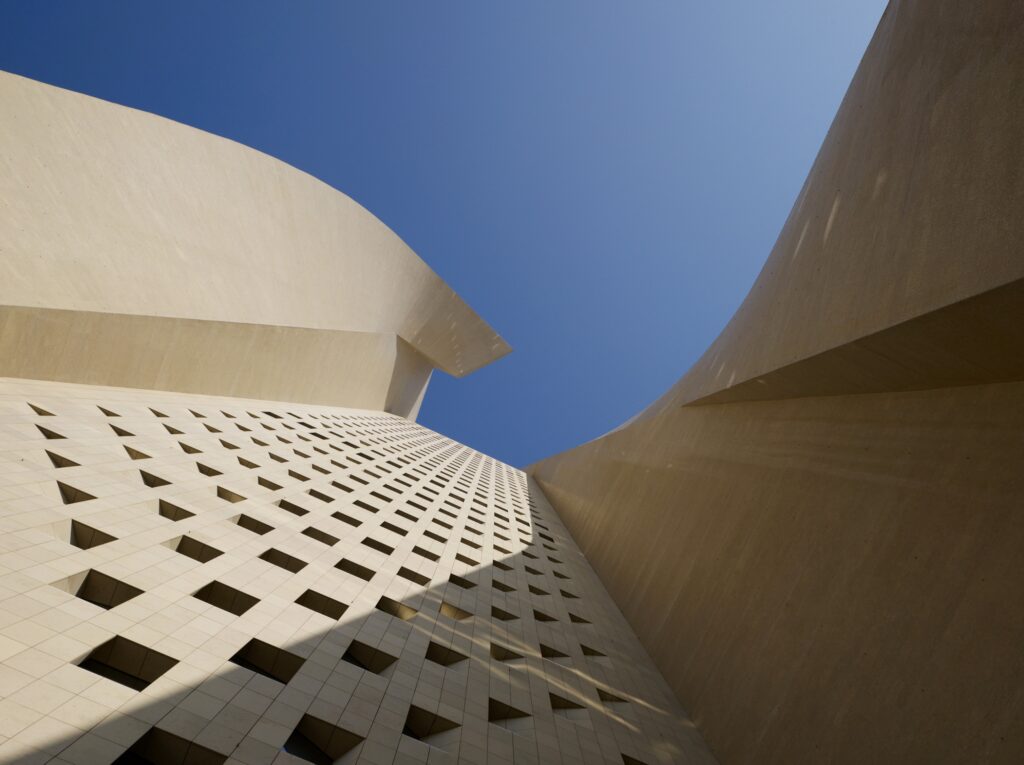
Good photographs are made in the field, and collaboration with the client is of the utmost importance for each photographer, so working with the client on location is preferred when possible. All three members mention that having the clients’ input and feedback is necessary to make sure the images capture the design intent of the project, as architects and designers might spend years working on a particular project and pulling that knowledge from them helps to make photographs that not only make the client happy but translate architecture into an understandable photograph.
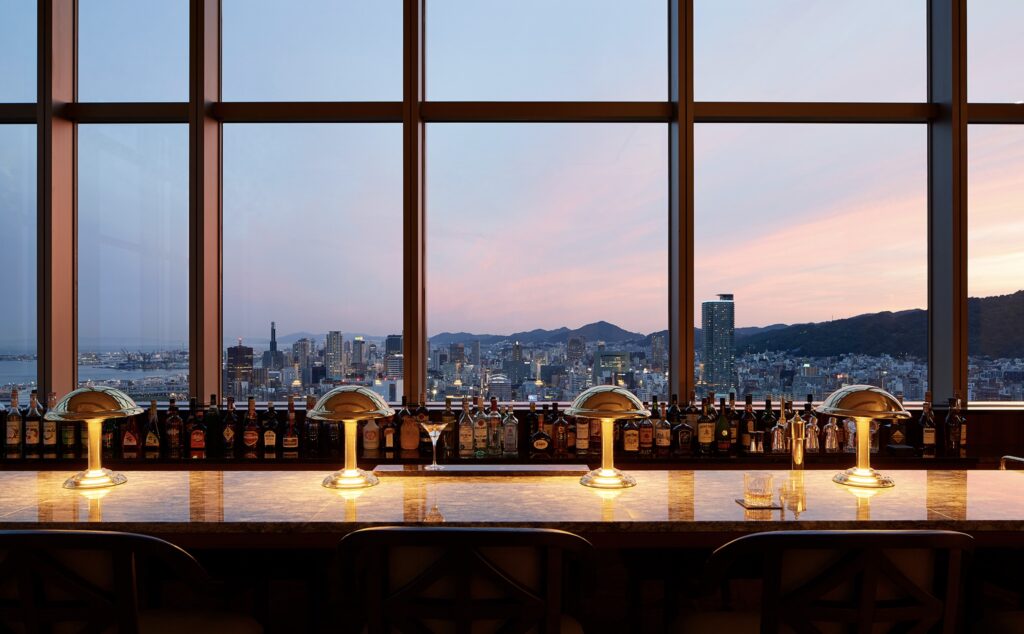
In order to make those understandable photographs, all three photographers try to scout whenever possible – which is not as easy as one might think, given the fact that Merrick lives in central New Mexico, while Hall and McCaugherty are in Chicago, working with packed schedules of their own, so many projects are not even seen until they arrive to photograph them (another reason why it helps so much to have the client on set!).
Without the ability to scout, one can often be surprised at what they find, for better or worse. Sometimes the spontaneity of working without a scout leads to photographs that would never have happened otherwise, because photographers and clients tend to ‘marry’ hypothetical shot lists and angles made at certain times of day. Without a scout, sometimes you show up to a building that isn’t quite ready and you spend the entire day composing around temporary fencing and port-a-potties!
As we all know, not every project is portfolio material, but even on the “less beautiful” projects, Merrick believes you owe the client the best you can do. Reiterating that he’s made a career of crafting incredible images in all scenarios, he believes that “if the architecture itself is ugly, it just necessitates that you find something about it that is exciting to you.” Hall echoes this, saying that you need to rise to the occasion on the lackluster jobs. It can’t all be portfolio material but the truth is we build our business on the photographs that aren’t portfolio material – “making the ordinary look extraordinary” is a core tenant of each member of the group.
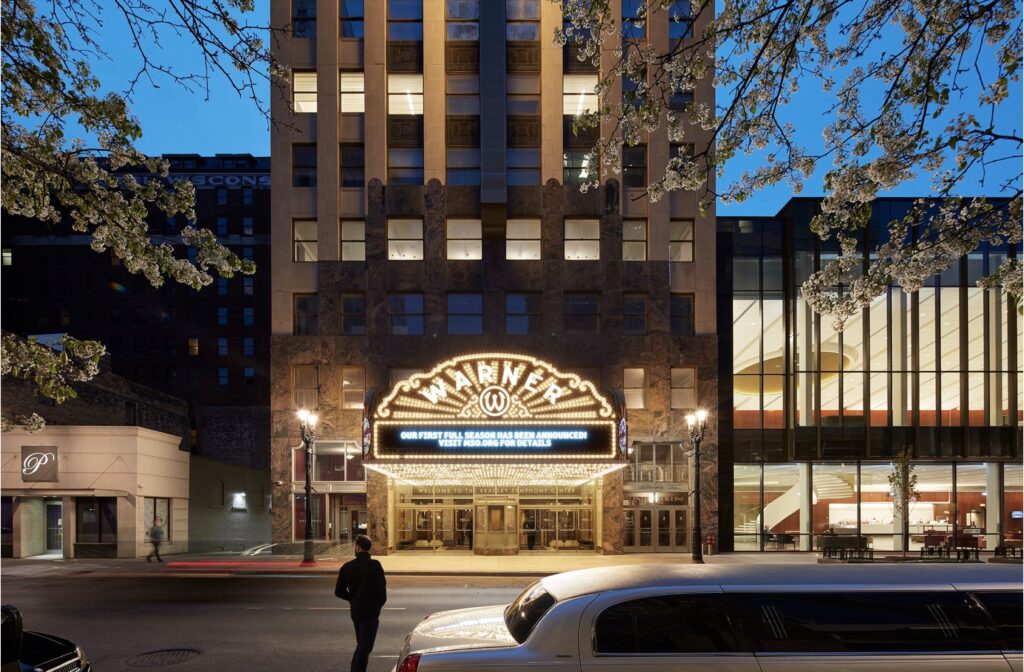
Photographing The Tallest
Of all the projects that Merrick, Hall, and McCaugherty have photographed, there are certainly a few that stand out as the most memorable – either for good or bad.
Hall remembers his worst with a subtle laugh, recalling a trip to a university on Long Island. After a long day of making photographs, they were getting set up for their twilight image when a security guard on a bit of a power trip (has anyone not dealt with this?) kicked them and the architect – who spent years working on the project – off the campus without explanation.
Merrick, on the other hand, got it particularly bad when asked to create more editorially-styled images for an annual report. The assignment, and subsequently the results, were so far out of their normal style that when the images were presented to the CEO, there was stunned silenced followed by “Fuck you. You’re fired.” Keep that one in mind the next time you’re upset that a client asks you to retouch out the construction site next door on an otherwise impressive set of photographs!
Kendall’s personal horror story was actually on her first solo architectural shoot, where she was commissioned to photograph a private residence for a magazine. In her words, the homeowners were slightly pissed she was there to begin with – just one of those days where you walk through the front door on the wrong foot! The magazine (without a representative on site, naturally) requested that she photograph it in the fall but then went one step further and asked that they make it look “wintery.” A portrait photographer hired to make a set of images of the homeowners pulled an Irish Exit halfway through the day, so Kendall had to end up shooting not only the architecture (which she admits she missed a lot of due to time constraints and stress) and the portraits of the homeowners, including one of the homeowner and a stubborn horse; after which they were asked to leave, shot list incomplete.
While the bad stories make for juicy articles, there have been some incredible jobs as well that will stick with them forever. After a protracted bidding process and all the drama that comes along with it, Merrick was awarded the commission from Skidmore, Owings, and Merrill to photograph the Burj Khalifa – the tallest occupied structure on earth – in 2013. The photography of the tower came at a turning point for the city of Dubai, when it was just coming into its own, but not quite densely populated with skyscrapers as we know it to be today. Many angles Merrick photographed are no longer possible, and the access afforded to private suites and corporate levels remains unparalleled.
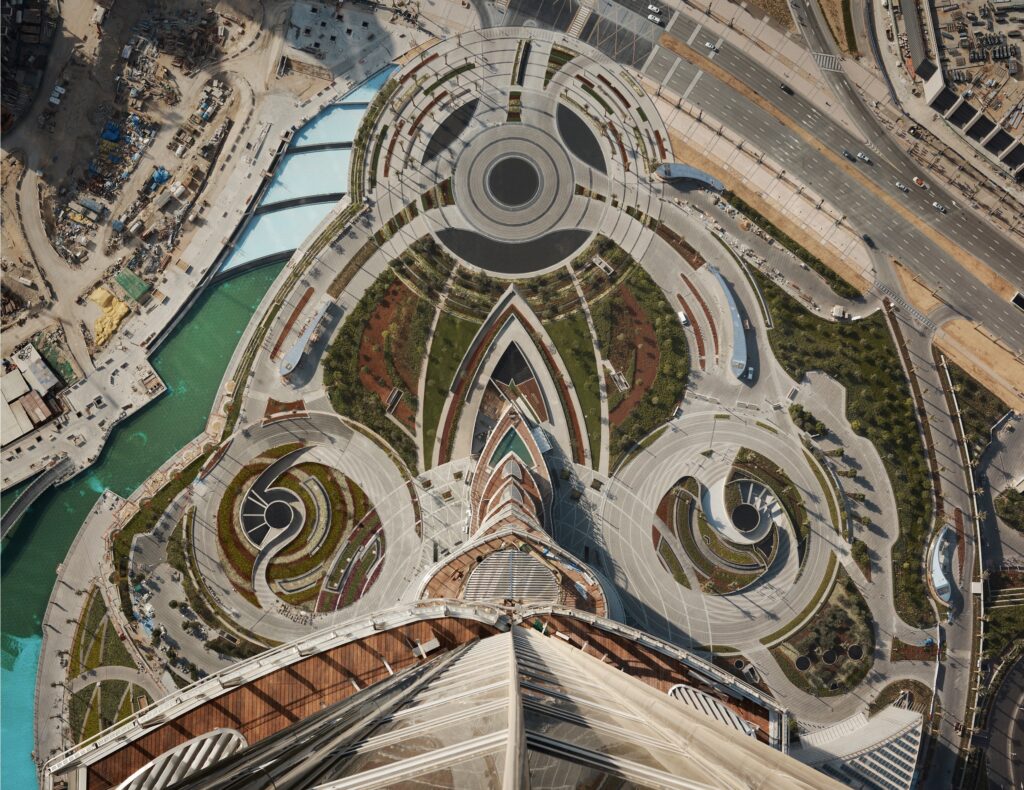
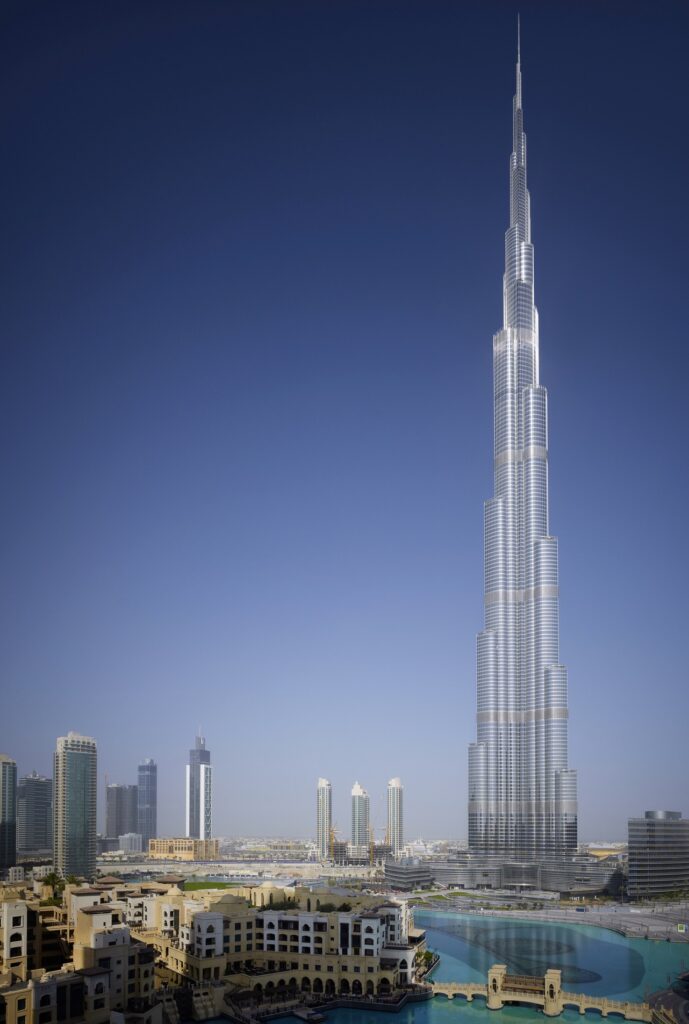
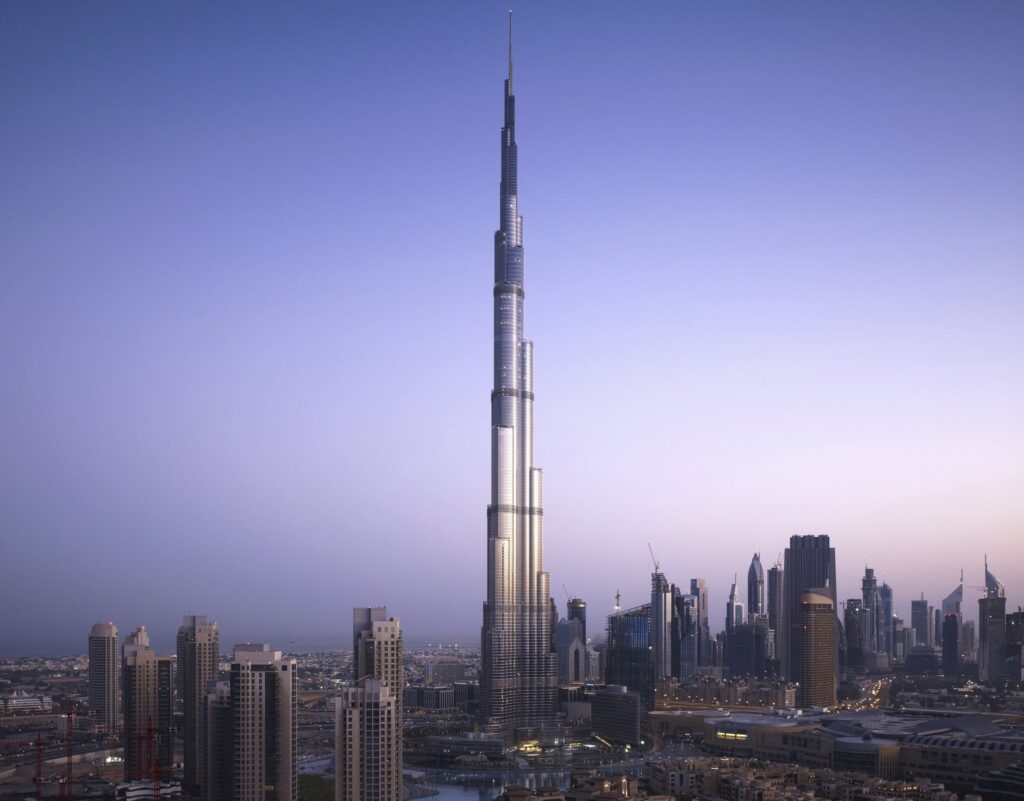
Hall fondly remembers his favorite commission at the Museum of Contemporary Art in Chicago. Once again, unfettered access provides an incredible vantage point to make the best images possible. Hall+Merrick has enjoyed a great relationship with the MCA, culminating in a book featuring Steve’s images – a major win for the hometown photographers who call Chicago their home. McCaugherty has also photographed the MCA, creating stunning images of her own.
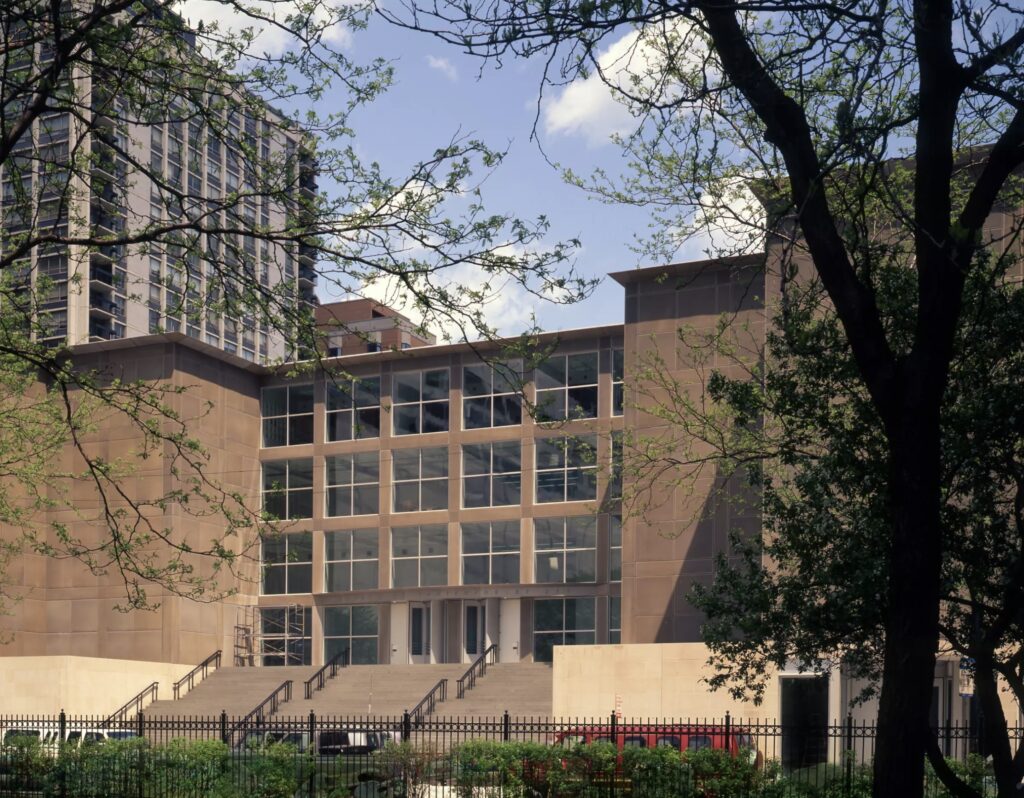
McCaughtery, on the other hand, has a more recent start in the industry and notes that her relatively short career was really kicked into high gear when she was hired to photograph CME Center in Chicago – one of her first purely architectural photo shoots. The subject matter, being such expressive architecture, was so beyond the interiors she had been accustomed to shooting before. The results were spectacular (seen below) which immensely boosted her confidence and ability to put the camera down in the right spot as judged by her instincts honed with her practice.



Fixing it in post
…Isn’t really a thing with Hall+Merrick. Every photographer has succumbed to the temptation of waiting until the files are on the computer to solve problems, but that is not the way these three photographers operate. Each member of the team works hard on location to get it right in-camera, and all process their own raw files and do basic corrections. As if she wasn’t impressive enough, McCaugherty does all of her own retouching, mentioning that she prefers to have complete control over the finer aspects of retouching such as color correction and brightness, as it can be quite tricky to communicate those aspects to a retoucher accurately.
Hall and Merrick both outsource their retouching, but are also known for absolutely nailing it in camera, due to learning on film, so their required retouches are usually a bit less involved. Frequent requests include cutting in window views that are slightly too bright and need to be tamed to be closer to what it looks like in real life, removing fixtures on exterior images such as trash cans and street lights, and other small requests from the architects to remove warts such as fire alarms and sprinkler system covers.
“Density, crop, color balance, and contrast are all the photographer’s job,” according to Merrick. “These are all things that need to be gotten right in camera on location, otherwise the photo will look off no matter how much retouching it is subjected to”. Back in the film days, they often spent hours on one image – gelling entire windows, waiting for the perfect moment, balancing light levels between spaces with hot lights, flashes, scrims and flags. We have it a bit easier today, but Merrick continues to use these age-old methods with great results. On every job, the same equipment travels – cases of lights, reflectors, camera support and more – to ensure the best results even when working in far-flung destinations.
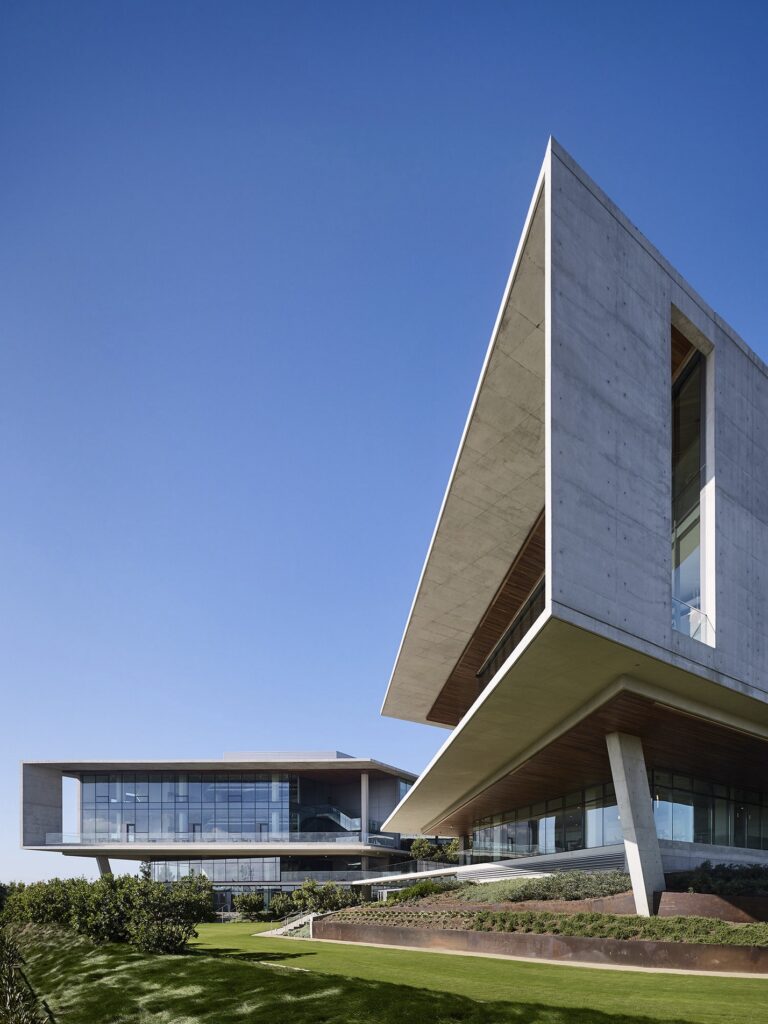
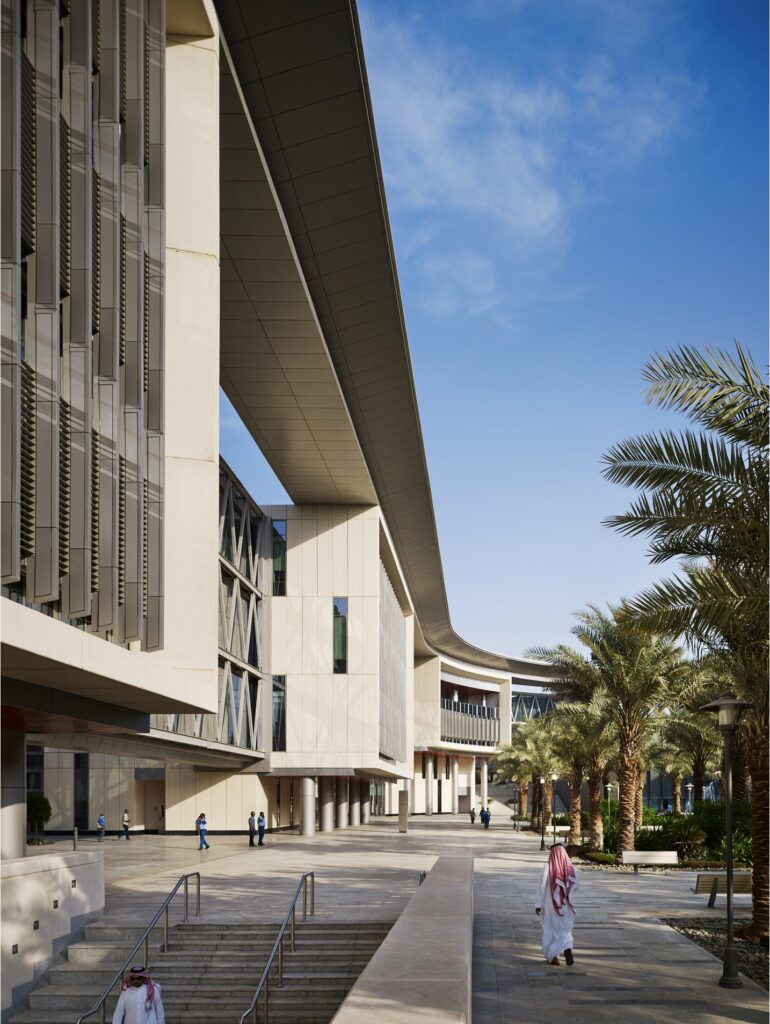
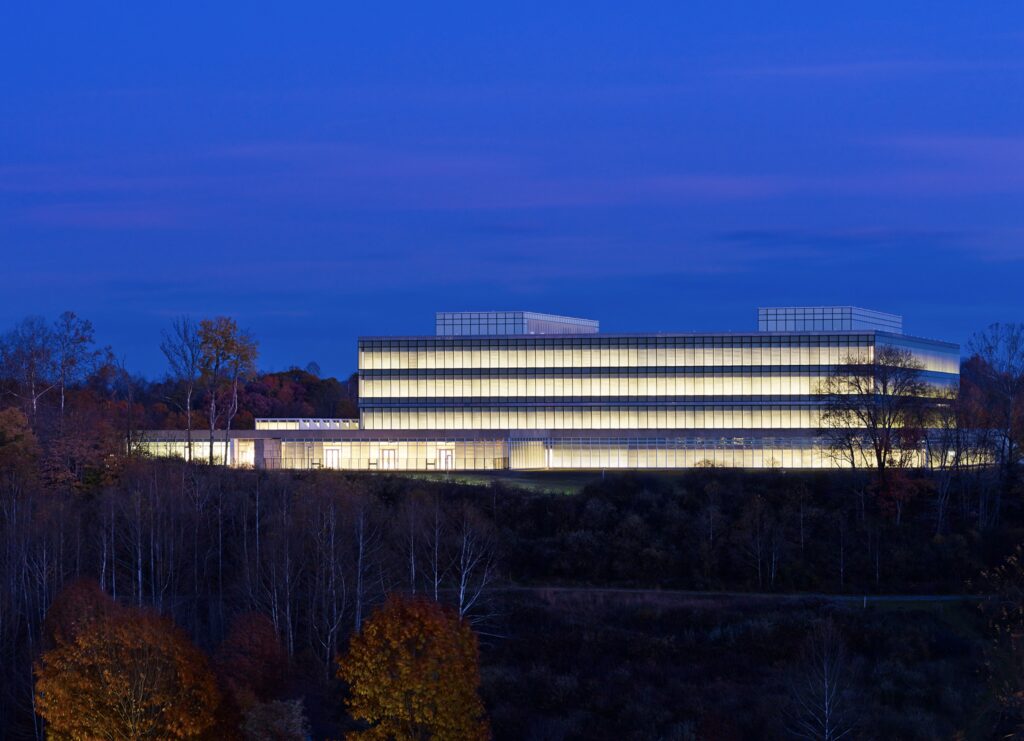
No contracts, only trust
Working in the business for a lifetime offers a unique perspective – and one of the most interesting takeaways that we discussed was the idea of not using a contract. Merrick believes a contract is one of the fastest ways to establish distrust in a relationship. When pressed, both Hall and Merrick believe that the trust established over years of working with their clients has sort of created an unspoken bond between photographer and client.
Surely, this must have led to some snafus in the past, you say. “We’ve only had three issues, ever.” Dream clients, indeed.
McCaugherty adds “we send a letter along with our quote that spells out the client’s role, our role, and what is included within the quoted rate. We don’t have contracts but we do inform clients of our policies and spend more time going over everything with newer clients.”
One of the most common questions we get here at the Architectural Photography Almanac is something along the lines of “my client gave the photos to someone else, they are using them commercially, and I haven’t been paid for that usage, what do I do?” I believe that the legacy architects that Hall+Merrick have worked with have been so well trained by Hall+Merrick and Hedrich Blessing that the relationship is sacred to both architect and photographer. “It’s rather simple” I was told by Merrick – “Our clients know how it works and don’t give the images out without contacting us.”
I imagine that some of the issues faced by working photographers today involves the fact that the industry has grown at such a rapid rate, that there are so many companies who just don’t know how image licensing works, and are so far out of their depth with regards to copyright law to be almost clueless.
Before architectural photography exploded with the advent of the digital camera and internet advertising, the trade was practiced by a select few professionals who upheld very high standards for keeping the craft professional. The ASMP and AIA worked together to come up with a framework for hiring photographers and distributed a highly researched and fair document which shared information on how to hire architectural photographers, so the problem seemed much less widespread within the smaller community of architects and their photographers. Having these clients on your team from day one seems to have hugely benefited Hedrich Blessing and subsequently Hall+Merrick.
So what do they use in lieu of a contract? According to Merrick: “A strongly worded invoice!”

Less Clicking, More Looking
So how can photographers advance their career to new heights?
The answer, unfortunately, won’t surprise you. It’s the same answer repeated over and over, often greeted with the retort of “but my clients want more.” Hall, Merrick and McCaugherty all said the same thing. Slow down.
Many of our readers aspire to photograph better architecture: bigger projects, for more money, their dream clients, in their dream locations. Oftentimes photographers will photograph real estate, weddings, or products in the interim while they sharpen their architecture portfolio. McCaugherty makes the salient point that photographing real estate is “taking a picture of what’s already there; photographing architecture and design is interpreting it” but one must separate from that mentality of photographing everything all the time. Clients may demand ever more images, but are they really any good at all? 15 incredible images tells the story better than 30 mediocre.
McCaugherty, clearly wise beyond her years in terms of photographic acuity, recommends stopping and thinking “what is important here vs what is extraneous?” Each member of this crew routinely take over one hour to make each photograph, delivering 8-15 images in a day on average. Merrick mentions one of his quotes, wise as ever, words crafted over five decades of photography: “Less clicking, more looking.”
You can see all of Hall+Merrick+McCaughery’s work at hallmerrick.com.
